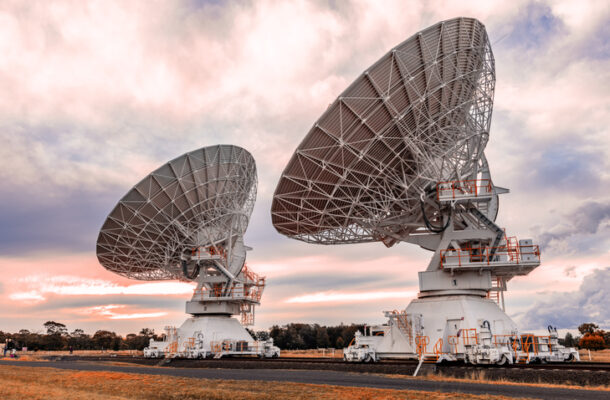A blow for the Australian space sector

In a brutal blow to Australia’s space sector, future economy, industrial base and international reputation, the Australian government has axed the National Space Mission for Earth Observation (NSMEO), doubling down on the recent cancelling of both the Australian spaceports program and funding for space access, which aimed at getting Australian space tech into the global space economy.
In a confusing move against a national strength, it actually undercuts other government policies such as the National Reconstruction Fund, which Minister for Industry and Science Ed Husic has said the space industry can access.
Harnessing the advantages of space as a sector and a domain should be a key organising principle for the National Reconstruction Fund. The space domain has many applications for technologies in which the government wants to invest—additive manufacturing, robotics, quantum, automation and big-data management. Space-based solar power offers a path to reliable, sustainable and very cheap energy for the entire earth.
A national space mission is vital to any country that is serious about space. It can provide an organising concept for industry and certainty of funding and demand for space services, including satellites, payloads, launch facilities, data management from orbit and earth, and mission control. It enables a joined-up approach to developing the skillset necessary across government and the private sector for more complex missions.
The NSMEO could have ensured that Australian companies kept up with global standards and retained the ability to insert themselves into an industry conservatively estimated to be worth over US$1.5 trillion before 2040.
That opportunity has been lost.
The locus of innovation and capability development in space has long shifted and it’s no longer the sole preserve of secretive and expensive government programs. The commercial sector has assumed the driving seat and that commercialisation is unleashing a transformation for humanity. This latest technology-driven revolution opens unlimited opportunities for Australia’s national security, its future prosperity and its way of life. Decision-makers need to better understand how Australia’s space future is a matter of national interest.
Over a decade, commercialisation has democratised access to space and changed significantly how we do important things on earth. Like early 20th century electrification and the ‘digital transformation’ accompanying the semiconductor revolution, commercial actors have begun humanity’s ‘space disruption’.
Off-earth capabilities offer cheaper and more effective alternatives to activities on the planet’s surface, including for earth observation and intelligence, environmental monitoring and management, communication, transportation, manufacturing and fabrication. Access to plentiful resources in space offers options to cease depleting terrestrial resources that are finite and necessary for the earth’s ecology. It offers enduring and promising ways to manage, and possibly to begin reversing, the impacts of climate change.
If we fail to recognise the opportunities in space, our economy—and security—will be left in the dust. Nations that do not share our interests and can actively use space to threaten us are moving apace in all areas of space development. We cannot afford to leave the competition in this key domain, which has a direct effect on Australia, to others. Space is the ultimate high ground.
Just as our key allies, including Quad partners, are ramping up space cooperation and boosting their space economies—as seen in last week’s joint communiqué from President Joe Biden and Prime Minister Narendra Modi, which made clear that the US and India are on ‘a course to reach new frontiers across all sectors of space cooperation’—we are giving them the clear message of disinterest and lack of ambition.
It is particularly confusing given government and industry have realised the need to come together to tackle threats in other domains, including critical and emerging technologies and cyber, and that it is space which both supports the activities we take for granted in our daily lives and offers solutions to the world’s most pressing problems.
Now, Australia is a consumer of space services provided by other nations that regard those services as secondary to their own national and commercial interests. Australia depends on others for weather services, GPS, communications connectivity and precision navigation and timing.
As a nation suffering increasingly catastrophic weather events, and one that professes to be committed to combating climate change, Australia owns and operates no space assets that can give us real-time information that could save lives. The same technology also offers visibility of regional activity, including military, maritime, air, ocean health, methane, carbon dioxide and hydrogen monitoring. Axing the national mission makes no sense in this context.
From a defence perspective, emerging space technologies are producing new capabilities that are small, cheap, unsophisticated and leverage mass. The nation that most effectively couples these options with the more expensive, exquisite, fewer but high-end capabilities is likely to achieve both strategic and tactical advantage. It’s not a matter of one over the other. We must think carefully about human–machine teaming to preserve life, win battlefield superiority and codify where possible the responsible and ethical use of technology.
Left to authoritarian states like China and Russia, space will become a frontier of anarchy in which passive nations will need only to look to the heavens to see both the stars and their sovereignty disappearing, replaced by millions of satellites encircled by debris, without agreed rules and regulations. The transformation of space will rewrite history. If we are not part of that transformation we put our future in the hands of others, making 200 years of debate on the law of the sea and the fight for territorial sovereignty look like child’s play.
Commercial actors have set loose a ‘virtuous circle’ in space—similar to that observed over decades in the semi-conductor industry. If Australia and its allies want to avoid being left scrambling for industrial and technological capability for space, we need to act now.
Iterated innovation in launch systems by companies such as SpaceX, and many smaller companies, combined with ongoing miniaturisation of microelectronics and other components of satellite payloads, is driving down costs—rapidly and predictably—for ever more business models in space. This, in turn, rationalises new investment in launch and space infrastructure.
New space businesses are reshaping our terrestrial lives. Some of these changes are more visible than others. How does Uber know where to pick you up and drop you off? Do you know, or care, whether a terrestrial or satellite network connects your phone calls? Timing signals, without which the internet cannot function, are maintained by satellites. Our lives already depend, utterly, on space.
Fortunately for Australians, geography blessed us with important advantages in this global economy. A thinly populated continent with little conflicting air and marine traffic or electromagnetic emissions gives us the planet’s best real estate to put things into, or bring them out of, space. This is true regardless of whether those things are people, matter or that vital 21st-century commodity, data. Similarly, relatively unobstructed views of a huge swathe of the southern hemisphere sky give Australia unparalleled potential to track and help manage activities in space itself.
Although Australia has long recognised and enjoyed our geographical blessings, we’ve been slow to grasp the opportunities our location gives us in space. Only in 2018 was the Australian Space Agency established and were rules governing the industry including launches and returns regulated. After a burst of activity with the agency’s creation, progress has notably slowed. Its budget for 2023 provides $34.2 million to support core functions and focus on regulation, compared to the 2023 budget of the Canadian Space Agency at C$2.5 billion and NASA’s budget allocation in 2023 of US$25.4 billion. Ours is stunningly insufficient.
The timidity, and even ambivalence, with which Australia has assumed its role in space is perplexing for two reasons. Australia is missing an opportunity to take a leading role in ‘spatial transformation’ and the 21st-century trans-global economy. And it is failing to optimise vital international partnerships that are firmly in its strategic interests.
The impact of this spatial transformation extends through the economy to geostrategic competition. Consequently, global powers have opened a new race to build previously unimagined space capabilities, to control particular orbits and to access lunar ice deposits—a key to creating renewable fuel supplies. This new space race is not about national prestige, but about building and maintaining genuine strategic advantage on earth. Accordingly, competition projects tensions about the proper way to organise economies and society into space, including whether a rules-based international system and a free-and-open internet should or even could extend beyond earth’s surface.
These questions touch on Australia’s national interests and international responsibilities as a proponent of the rules-based international system. As with collective defence on earth, Australia’s own democratic values oblige it to develop and sustain capabilities that ensure stability of the rules-based system against its competitors and potential adversaries in space. And those competitors are developing capabilities in space rapidly. They are investing broadly, for economic and scientific advantage—but most importantly for the strategic high ground that dominance in space offers.
Failure to defend the open international system in space will likely result in collapse of that system on earth. With war raging in Ukraine and the rules-based system under the most strain it has ever experienced, the time to strengthen and extend it in every domain should be a key priority. In direct contrast to the decision to axe the space mission, it’s time for Australia to look up and aim high.
This article was published by The Strategist.
Bec Shrimpton has over 20 years’ experience in policy, operational and corporate roles in the Australian Department of Defence and in the Department of Foreign Affairs and Trade. She is a Director at the Australian Strategic Policy Institute, and convenes The Sydney Dialogue, a policy summit for critical, emerging, cyber and space technology.













